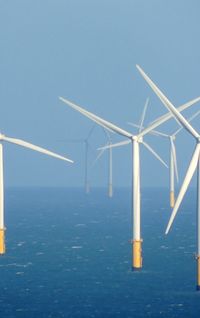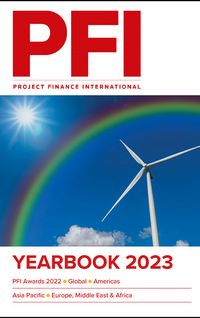Unlike traditional renewable energy projects, which are dependent on the sufficiency of sunshine or wind to generate energy, round-the-clock (RTC) renewable energy projects with the help of battery energy storage overcome the intermittencies associated with solar and wind projects. By Santosh Janakiram, partner, head, projects, Subhojit Sadhu, partner, and Gayatri Shanker, principal associate, Cyril Amarchand Mangaldas.
India has made significant strides towards renewable energy through innovative power generation models in recent years. The nation surpassed the landmark of 100GW of installed renewable energy capacity in August 2021. However, the intermittent and infirm resource-centric nature of renewable energy, further affecting its ability to meet variable electricity demand, continues to act as a bottleneck in its potential to substitute conventional power.
Round-the-clock (RTC) renewable energy projects overcome these intermittencies. These dynamic projects assist in providing flexibility in generation to meet the peak loads of distribution companies (DISCOMs) and utilities, which are typically subject to the change based on the weather and tend to undergo pattern shifts over time. However, if a renewable energy project is complemented with ample energy storage capacity, flexibility can be provided to DISCOMs and state utilities to dynamically requisition firm hourly energy to meet their ever-evolving demand curve for energy. Further, in recent times, DISCOMs have shown keen interest in renewable RTC projects given the absence of fuel price fluctuation risk as against a typical power project in India.
On October 18 2019, Solar Energy Corporation of India (SECI), an Indian central government-owned nodal agency with an AA+ domestic debt rating by ICRA Ltd1, had invited proposals for setting up an aggregate 400MW capacity of ISTS-connected renewable power projects in India, bearing reference RfS No. SECI/C&P/RPD/RTC-I/RfS/400MW/102019.2, to be set up on a "build-own-operate" basis and augmented with appropriate energy storage systems for round-the-clock power supply. As per the said proposal, the developer could choose any combination of solar and wind generation facilities and energy storage system, so long as it met the requirement of the National Wind-Solar Hybrid Policy, 2008 (RfS). The projects could be established anywhere in India and be connected to the interstate electric transmission system.
The project
ReNew Power India Private Ltd (ReNew Power), established in 2011 and a subsidiary of ReNew Energy Global PLC, is one of India’s leading renewable energy companies and independent power producers (IPPs) having a diverse portfolio of solar and wind projects across various states in India. ReNew Power develops, builds, owns, and operates utility-scale wind energy projects, utility-scale solar energy projects, utility-scale firm power projects and distributed solar energy projects. One of the key strengths of ReNew Power is in its being a vertically integrated, contracted and independent power producer with diverse execution capabilities.
ReNew Power was successfully awarded the bid submitted in response to the RfS by SECI vide a letter of award dated June 4 2020 for the development and establishment of the aforementioned 400MW round-the-clock renewable (RTC-RE) project in the states of Rajasthan, Maharashtra and Karnataka (the project). The commercial operation of the project is scheduled to commence by August 2023.
For the purpose of execution of the project, ReNew Power set up a special purpose vehicle, under the name of ReNew Surya Roshni Private Ltd (the borrower), which signed the power purchase agreement with SECI on August 6 2021 for a 25-year tenure (PPA). As per the terms of the PPA, the borrower is required to supply electricity in the first year at Rs2.90/kWh (~US$0.039) and which tariff would increase by 3% annually for the first 15 years, post which it would stabilise for the remaining 10 years of the PPA. In April 2022, Mitsui Power India Co Ltd (Mitsui), partnered with ReNew Power and acquired a 49% stake in the borrower. Mitsui group currently have 65 power assets across 22 countries, with a gross capacity of approximately 39.6GW and it aims to apply its global expertise in the field of energy to seamlessly achieve commercial operations of the project.
As a first-of-its-kind round-the-clock renewable project in India, this project aims to address a number of issues relating to the intermittencies of renewable power generation. While it is typically strenuous for conventional renewable energy projects to commit stable and uninterrupted electricity supply due to the unpredictable and intermittent nature of winds and solar irradiation, the project is a historic step for a high capacity factor on a round-the-clock projects with multiple wind and solar plus battery energy storage farms..
The project is being designed to operate at an 80% average annual plant load factor and is expected to have a minimum capacity utilisation factor of 70% monthly, despite being a renewable energy project. Given that solar and wind farm-based renewable energy projects in India typically have a lower plant load factor depending on site and technology selection, the borrower has factored 900MW of wind capacity and 400MW of solar capacity, which will be further supplemented by battery energy storage system (BESSs), for meeting the round-the-clock requirement of the project.
![]()
Financing the project
The project cost expected by the borrower is approximately US$1.2bn, for which it has sought financing in the nature of external commercial borrowings (ECBs) from a consortium of 12 international lenders, led and structured by Co-operative Rabobank UA (Hong Kong Branch). This constitutes one of India’s largest project finance fundings in the form of ECBs in its renewable energy sector for a single project. The financing of the project is also being undertaken through Indian rupee and foreign currency denominated letter of credit (LC) facilities being provided by domestic lenders as well foreign lenders through their Indian branches. The foreign currency and the interest rate exposures are being hedged through banks in India.
The ECB and rupee financing, including the hedging facilities, is proposed to be secured by a standard project financing security package, through a combination of the security over the assets of the borrower and a pledge over the securities issued by the borrower. One of the distinguishing features of the consortium financing of this project is that while the LC lenders are relying on the financial credibility of the borrower, the payment under the LCs will also be supported by the proceeds of the ECB facility in compliance with Indian foreign exchange regulations, such that LCs would be returned along with the borrower obtaining a corresponding long-term facility. The intercreditor arrangements are also unique in catering to the requirements of each of the lenders, which range from domestic to international lenders that are providing fund based and non-fund based facilities, as well as hedge counterparties that are hedging the currency and interest rate risks.
A challenging aspect of this project is the wide-spread location of the power plants spanning three states in India, requiring the borrower to operate all power plants (along with BESSs) located at different sites concurrently and seamlessly in order to achieve the minimum energy requirements under the PPA. Furthermore, the implementation of the project requires the borrower to meet regulatory requirements specific to each state while achieving the project completion timelines. This, inter alia, involves legal and regulatory compliances to procure freehold and leasehold land in multiple locations, a process known to be particularly complex and time-consuming in India.
In addition, about 18%–20% of the power generated through the project has been earmarked by the borrower to be sold in the retail market through power exchanges. This is not typical of project financing transactions in India, which predominantly rely on the long-term tie-up of power where lenders assess the creditworthiness of the offtaker(s), usually state/federal run, and the enforcement of the PPA obligations. The lenders herein have assessed a bespoke offtake model that has a unique set of challenges and is distinct from what lenders are typically used to.
Structuring project contracts
The contracting structure adopted is particularly unique and distinct from typical turn-key solutions common in the renewable energy space. The borrower is not only relying on domestic and foreign third-party suppliers and contractors, but is also utilising ReNew Power’s in-house expertise in undertaking balance of plant activities, such that the project achieves commissioning by the scheduled timeline as prescribed under the PPA.
The project contracting structure includes negotiation and finalisation of a suite of approximately 50 project contracts for each of the solar, wind and BESS components, with a separate contracting structure for each of the project sites in order to ensure a seamless and cost-efficient structure. As against the usual practice of importing foreign-made modules (which are subject to safeguard duties and basic customs duties), in a rather unique and innovative solution, the borrower intends to procure the solar cells to be supplied to an Indian module manufacturer that is setting up a dedicated module manufacturing line for borrower in its plant.
The contracting structure for BESSs should set a replicable precedent for future renewable energy projects adopting battery storage solutions. The energy storage products for the project are provided by Fluence, a Nasdaq-listed entity that has undertaken energy storage projects in 30 markets around the world. One of the key elements to the contracting structure is the setting up of a new joint venture of ReNew Power and Fluence, Fluence-ReNew JV, to provide storage products through an integrated energy solution. The borrower is intended to be the first customer of the Fluence-ReNew JV. Fluence’s global experience coupled with ReNew's pioneering role in the sector is set to bring a reliable and localised storage solution in India. While Fluence-ReNew JV will supply and provide supervision services, the balance of plant and commissioning is being undertaken through ReNew Power’s in-house expertise. Fluence ReNew JV will be undertaking the long-term operations and maintenance of BESSs, including augmentation of the BESS components.
Conclusion
The RTC project, as the first in the region and probably the largest of its kind, is truly a historic step towards accelerating India’s clean energy transition and setting a market-leading precedent for a model to be adopted and replicated for future round-the-clock projects. With a real potential to address and curb the ever-existing intermittency concerns of typical renewable energy projects, the project makes for a viable and sustainable option for the future of renewable energy in India. It is both a product and a service combined – and hence a unique offering that others are already seeking to emulate. However, the complexity of the regulatory challenges on the functionality of the hybrid-cum BESS model on a long-term basis remains to be assessed in the future. India’s climate goal of 450GW of renewable capacity by 2030 can be supported through such renewable energy storage solutions, with the borrower kick-starting the project in this space.
The electricity laws in India are also proposed to be amended with a focus on energy storage solutions, overhauling distribution licensing and disincentivising DISCOMs from payment defaults on tariffs payable to generating companies, thereby encouraging renewable energy companies to consider such marquee round-the-clock projects. We will watch this with great interest.
Footnotes:
1 - A subsidiary of S&P Global Ratings
2 - As amended on January 29, 2020 vide Ref No. SECI/C&P/RPD/RTC-I/102019/Amendment-01
To see the digital version of this report, please click here
To purchase printed copies or a PDF of this report, please email leonie.welss@lseg.com
![]()

















